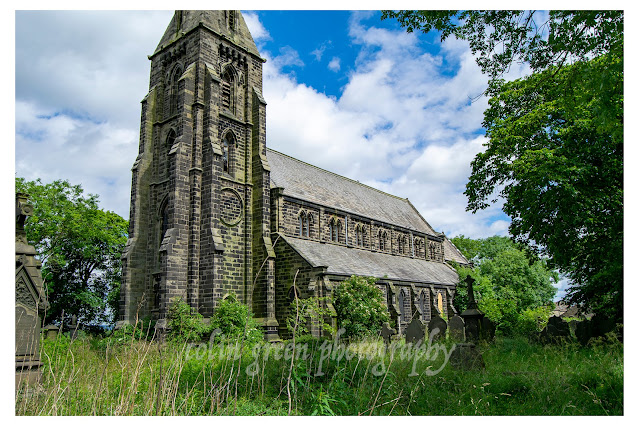A Victorian Vision: Origins and Architecture
St. Paul's was erected during a period of rapid industrial expansion in the Worth Valley. Denholme, like many surrounding towns, experienced a surge in population, necessitating the construction of new places of worship. The church, designed in the Gothic Revival style, reflects the prevailing architectural tastes of the mid-19th century. Its construction speaks of the era's commitment to creating grand, spiritually uplifting structures.
Key architectural features that warrant attention include:
- Materials: The church is constructed from locally sourced stone, a hallmark of Yorkshire architecture. This material not only provides durability but also lends a sense of continuity with the surrounding landscape.
- Gothic Revival Elements: Observe the pointed arch windows, the intricate stone tracery, and the (now likely deteriorating) stained glass. These elements are quintessential to the Gothic Revival, a style that sought to evoke the grandeur of medieval cathedrals.
- Tower and Spire: The church's tower, once a prominent landmark, likely featured a spire, which is a common feature in parish churches of this period. (If the spire is no longer present, this fact should be noted with possible reasons why.)
- Plan and Layout: Research the original floor plan. Was it a traditional nave and chancel layout? Were there any notable features within the interior, such as a gallery, a specific type of pulpit, or particular stained glass windows? (This would be where online photos would be a great resource to cite.)
Decline and Redundancy: A Reflection of Changing Times
St. Paul's served its community for over 150 years, witnessing generations of baptisms, marriages, and funerals. However, by the late 20th century, the church faced dwindling congregations, a common trend in many rural areas.
- The church's closure in June 1997, due to structural and safety concerns, marked a significant turning point. The final service within its walls was a poignant moment, signaling the end of an era.
- The farewell service held in the new graveyard on September 5, 1999, further emphasized the church's redundancy, highlighting the community's shift towards alternative places of worship or changing religious practices.
- The fact that the church became a private residence is a common solution for redundant churches. This shows the difficulty in maintaining such large structures.
Current Status: A Private Residence and Grounds
As noted, St. Paul's has since been converted into a private residence. This transformation presents a unique situation, blending historical preservation with contemporary living.
- It is crucial to emphasize that there is no public access to the interior of the building. The current owners have a right to privacy, and any attempts to enter the property without permission would be a trespass.
- While the grounds may be accessible for those wishing to visit loved ones buried in the graveyard, it is imperative to contact the owners beforehand to ascertain the current access policy. Do not assume that public access is granted.
- The fact that the building has become a private residence, does give it a chance of survival, where otherwise it may have fallen into total disrepair.















